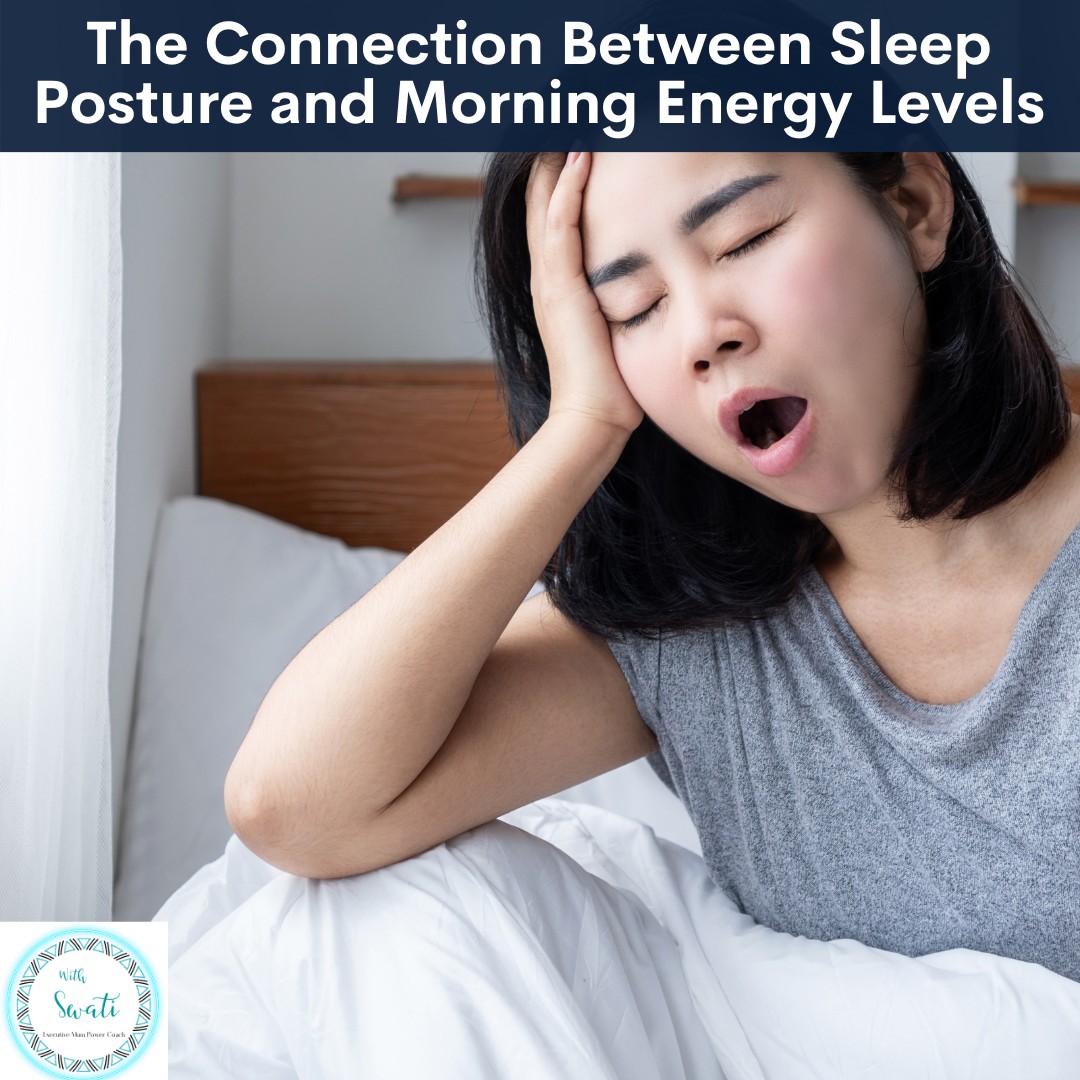
As an executive mum juggling career and family, waking up feeling refreshed is essential. However, poor sleep posture could be sabotaging your morning energy. From neck and back pain to nerve pain, the way you sleep can significantly impact how you feel when the alarm rings. In this blog, lets discuss the connection between your sleeping posture and morning energy levels.
The position you sleep in determines how well your spine is supported during the night. A neutral spine, where your head, neck, and back are aligned ensures that your muscles, ligaments, and joints can rest and recover properly. When your sleep posture is poor, your body has to work overtime to support these structures, leading to discomfort and fatigue by morning. Additionally, poor posture can compress your nerves, disrupt blood flow, and even affect your breathing. Over time, this can contribute to chronic back pain, neck pain or nerve pain, headaches, dizziness and a general lack of energy and focus.
Here are some of the common sleep mistakes that should be avoided to achieve a good sleeping posture:
Sleeping on Your Stomach:
While this position might feel comfortable initially, it forces your neck into an unnatural twist and exaggerates the curve in your lower back. This can lead to neck strain, back pain, and nerve irritation, all of which drain your energy.
Improper Pillow Height:
Using a pillow that’s too high or too flat can misalign your neck and shoulders, causing tension and stiffness that persist throughout the day.
Unsupported Legs in Side-Lying Position:
If your top leg isn’t supported, it can pull your pelvis out of alignment, straining your lower back and hips.
Here are some easy tips to optimise your sleeping posture:
Invest in the Right Pillow:
Choose a pillow that keeps your neck aligned with the rest of your spine. For back sleepers, the pillow should support the natural curve of your neck. For side sleepers, it should fill the space between your ear and shoulder.
Use Support for Your Lower Back:
Back sleepers can place a small pillow or bolster under their knees to maintain the natural curve of the lumbar spine and avoid back pain. Side sleepers can use a pillow between their knees to keep their pelvis aligned.
Transition from Stomach Sleeping:
If you’re a stomach sleeper, gradually transition to sleeping on your side or back. Use a body pillow to prevent rolling onto your stomach during the night.
Watch this video to learn 'Two easy tips to change your sleeping posture from sleeping on stomach to side or back sleeping'
Stretch Before Bed:
Gentle stretches can loosen tight muscles and prepare your body for rest. Focus on your neck, shoulders, and lower back to alleviate any tension built up during the day.
Create a Comfortable Sleep Environment:
Your mattress plays a critical role in supporting good posture. Choose one that provides adequate support and minimises pressure points. Avoid overly soft or sagging mattresses that misalign your spine.
Sleep posture might not be the first thing you think about when trying to boost your energy levels, but its impact is undeniable. By making small adjustments to how you sleep, you can wake up feeling more refreshed, energized, and ready to tackle the demands of your busy day. Try these tips tonight, and see how they transform your mornings!
HERE is a free guide on "How can you maintain a Good Posture While Sleeping". It gives you the details of sleeping posture in side lying, back sleeping, three postures to avoid when sleeping and how to change to a better sleeping posture and much more.
If you like this blog and want to be notified about new blogs as soon as they are published, subscribe to my mailing list below.
I would love to see you around the internet! For other places you can explore more about me: https://withswati.com/page/link
Note: This page contains affiliate links which will bless me, at no additional cost to you and I will be able to help more people with spine, nerve and joint pain.
















0 Comments